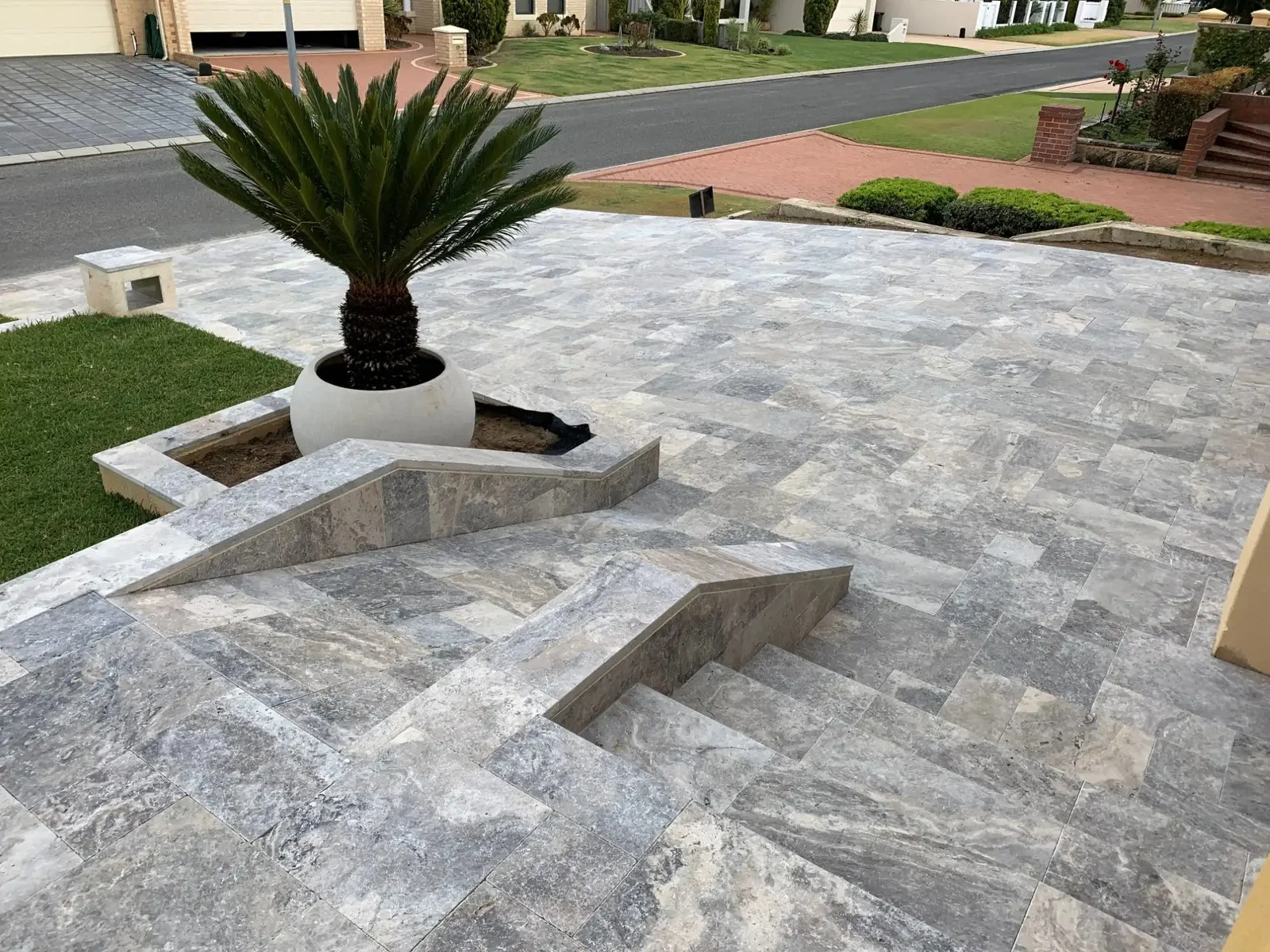If you’re designing a travertine patio, pool deck, or walkway, one of the most important installation choices is what goes between the pavers. Joint filler affects the look of the space, but also the stability, drainage, and long-term durability of your investment.
Below is a simple guide to help you pick the right option.
Why the Joint Material Matters
Travertine pavers look premium, but leaving joints unfilled can lead to:
-
Paver shifting or settling
-
Water pooling and drainage issues
-
Weed and ant problems
-
Dirt filling the gaps and discoloring the stone
So, the joint filler plays a functional and aesthetic role.
Common Options for Filling the Gaps
✅ Polymeric Sand — The Most Recommended
Polymeric sand is a fine sand mixed with binding polymers that harden when activated with water.
Pros
-
Helps keep pavers locked in place
-
Great wash-out resistance (rain & pool splash-zones)
-
Reduced weed and insect growth
-
Long-lasting and low-maintenance
Cons
-
Higher cost than basic sand
-
Must be installed correctly to avoid haze or staining
Best for: Pool decks, patios, driveways — most travertine applications.
Standard Dry Sand — Budget-Friendly but Higher Maintenance
This is traditional paver jointing sand.
Pros
-
Inexpensive
-
Quick and easy to apply
Cons
-
Washes out over time (especially around water)
-
Weeds and ants can become a problem
-
Requires frequent refill and upkeep
Best for: Low-traffic garden walkways or decorative areas.
Mortar / Grout — Smooth, Rigid Finish
Sometimes joints are fully grouted for a seamless tile-like look.
Pros
-
Very sturdy and polished appearance
-
Prevents debris from entering the joints
Cons
-
Can crack if the base shifts
-
Restricts drainage
-
Labor-intensive and more expensive
Best for: Travertine installed over a concrete slab with minimal movement.
Decorative Gravel or Pebbles — A Style Choice
Small stones or pebbles can replace sand for a natural feel.
Pros
-
High drainage
-
Unique design aesthetic
Cons
-
Less stable for walking surfaces
-
More weed growth if not maintained
Best for: Low-use garden pathways.
How to Choose the Right Option
Consider the following when selecting a filler:
| Factor | Best Option |
|---|---|
| Pool-side or wet areas | Polymeric sand |
| High foot-traffic | Polymeric sand |
| On a concrete slab | Mortar or grout |
| Decorative landscaping | Dry sand or pebbles |
| Low maintenance priority | Polymeric sand |
Tips for Using Polymeric Sand With Travertine
-
Make sure pavers are completely dry before filling joints
-
Use a blower to clear extra sand before wetting
-
Lightly mist with water — don’t over-soak
-
Keep traffic off until fully cured (24–48 hrs)
-
Seal the travertine afterward for extra protection
Final Verdict – What is the best material to put between travertine pavers?
For most travertine installations, especially outdoors:
Polymeric sand is the best material to put between travertine pavers.
It strikes the right balance of strength, appearance, and long-term durability — especially in premium outdoor spaces.

